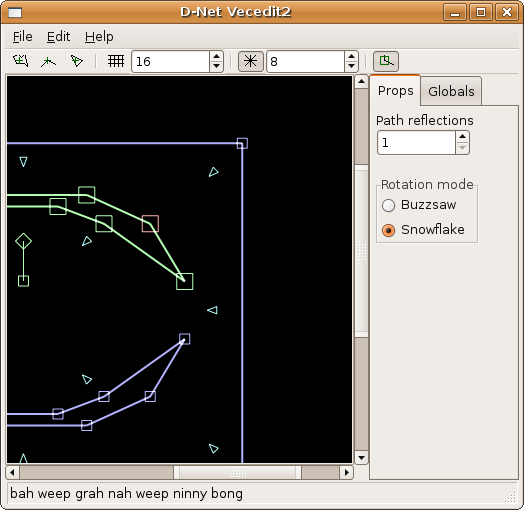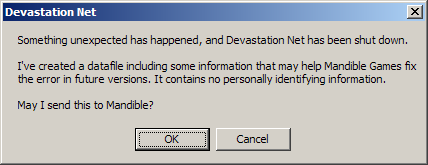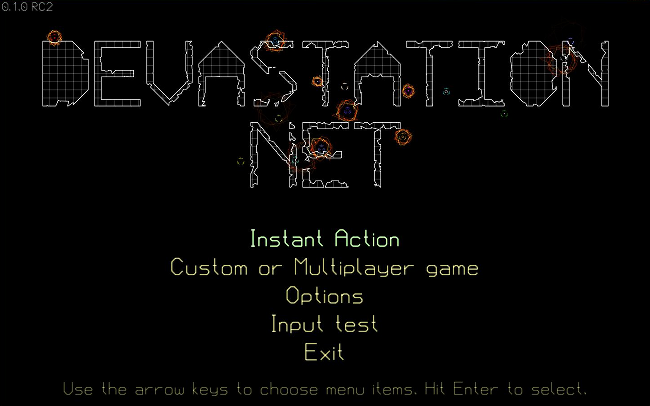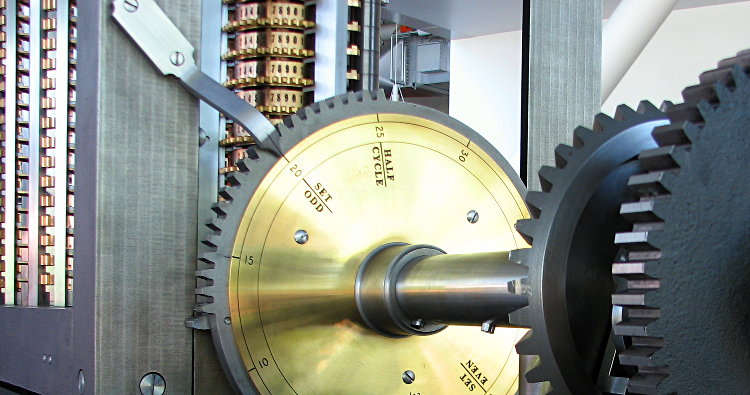For quite some time I've been trying to figure out my plans for my current project.
A bit of backstory. D-Net began about three and a half years ago. I was visiting a friend's house, playing video games, and he broke out an old gem named Destruction Zone that I'd played before. Destruction Zone – and this may sound familiar – was a top-down tank game, multiplayer, with tanks blowing each other up in an arena. We played quite a long game, occasionally cursing the interface, and eventually I said "Hey! This game is pretty cool! Someone should make a modern version of this, with support for gamepads at the very least."
And, well, here we are. I spent two and a half years coding it part-time, while working at Google and getting distracted by other projects, and now I've spent about a year on it full-time. D-Net has taken several truly unexpected turns that distinguish it from Destruction Zone (enough that I'm no longer worried about copyright infringement – the most similar thing at this point is the name) and has grown into a distinct and truly enjoyable game on its own.
The tough part turned out to be the very interface I grumbled about the first time. Supporting multiple players on a single system is hard, and you've seen me rant about this at great length. The end result is a game which, to be honest, isn't immediately impressive at first glance, since much of the effort has gone towards things that the user simply isn't supposed to notice. (Like the fact that it's not a horrible pain to play.)
But more importantly, as much as I want this game to be complete and done, there's much of it that doesn't interest me. There are people who love multiplayer games, who buy Supreme Commander and Half-Life 2 and World of Warcraft and then never touch the single-player segments. In many ways, that's what D-Net is targeted towards – and, sad to say, I'm not one of them. I've enjoyed my work on it quite a bit, and it's shaping up very well, but I am fundamentally a single-player gamer. I love story, I love plot, I love drama and emotions and the fact is that D-Net doesn't have any of those.
So what I'm doing right now? In some ways, not tenable long-term.
There are solutions. I could sit down and rework D-Net into a singleplayer game. D-Net would make a very interesting squad-based combat game, and I've been quite, quite, intrigued by all the things I could do with this within the D-Net framework. But this is problematical. First, it would require a huge rebalancing, a huge re-tuning, and a lot of changes to the engine. D-Net is not designed for sprawling landscapes, it is not designed for running firefights, it is not designed for static guards or NPCs or indeed any of the things I would need. Second, it would mean I would no longer have a multiplayer game. D-Net is a fun game and it's played frequently at game parties with my friends. I don't want to lose that, because I do truly enjoy the thing I've built. And third, I wouldn't be building a game and a story together. I'd be desperately retrofitting, and either the story would suffer or I would have to write effectively a full engine.
Alternatively, I could splice a singleplayer game into the existing D-Net. This eliminates one of the above problems but keeps two, and adds an even nastier third problem: when you try to make a singleplayer game and a multiplayer game at the same time, at least one of them ends up suffering. There do exist games which, without modding, have been excellent singleplayer and multiplayer games – Call of Duty 4 is the best recent example that I know of. But they have to be designed for this from the ground up, and obviously, that has not happened.
I think it's important to explain why I kept writing D-Net.
Originally I was writing it because I thought it would be a neat and fun project. Later, though, I started thinking about what I would want to write for commercial release, and I came up with a plotline and a game that I felt had a huge amount of potential. I'm currently calling that game MV. I ended up designing it for the Nintendo DS, and I have quite a few files full of design and plot that I've built up while thinking about it.
In order to develop seriously for any game console, you have to buy a development kit. In order to do that, you have to convince the publisher that you deserve one, and that you won't just walk away and sell it to the highest bidder. Development kits are rather closely guarded, and as I understand it, you never actually own one – you're merely "renting" it. So, in order to get a Nintendo DS devkit, I would need to convince Nintendo or some other publisher that I was a competent game developer.
Thus, D-Net.
From what I've gathered since then, Nintendo DS devkits are much easier to get ahold of than I'd originally thought. On top of that, it sounds like having a mostly-working game is even more of a draw than I thought – so even if I can't get a DS devkit, I can do most of the work on the PC (keeping the DS's hardware specs in mind) and almost certainly get one with that. To put it simply, D-Net is no longer needed.
And thus, I think it may be time to retire D-Net . . . for certain definitions of retire.
D-Net isn't finished, but it's close, in many ways. I have plans for networked play, for singleplayer mode, for good AI. I have plans for many game modes, for a neat ending cinematic, and for many things that would be fantastic to finish. If I scrap all of those, or most of those, I really have very little left to do.
My todo list, at this point, contains three major tasks.
- Make a public demo release
- Finish all the weapons
- Improve the graphics
And so that is what I am going to do. I'll do those things (and then make another demo release), and then I'll shop it around, and try to sell it, because I do truly want this thing to be sold and to show up on XBLA or PSN or Steam or Gametap. But if nobody is interested, then I suspect I'll end up GPLing it, because it's more important to me that D-Net gets played than that it makes money. And once I'm done with that, I'll get started on MV.
D-Net has been a large part of my life for quite a while, and I've enjoyed working on it, and I've learned a lot from it. But I think it's time to move on . . . after giving it those last few touches.

 Time for another release!
Time for another release! There's a lot of subtlety in a crash reporting system. For example, I've got mine rigged up so I can return messages, based on the game version, before the potentially large crash dump is sent. So if I start getting flooded with crashes that I've fixed, I can tell people to go download the new improved version, please, and stop bothering me with things I already know. (Perhaps not in those words.) Not only that but I can also return messages after the crash dump is sent, so I can analyze it server-side and return things like "your graphics card sucks" or "your RAM is bad". And it transmits the data in a compressed form to save on bandwidth, and it records as much information as I can without violating the privacy of my users.
There's a lot of subtlety in a crash reporting system. For example, I've got mine rigged up so I can return messages, based on the game version, before the potentially large crash dump is sent. So if I start getting flooded with crashes that I've fixed, I can tell people to go download the new improved version, please, and stop bothering me with things I already know. (Perhaps not in those words.) Not only that but I can also return messages after the crash dump is sent, so I can analyze it server-side and return things like "your graphics card sucks" or "your RAM is bad". And it transmits the data in a compressed form to save on bandwidth, and it records as much information as I can without violating the privacy of my users.


